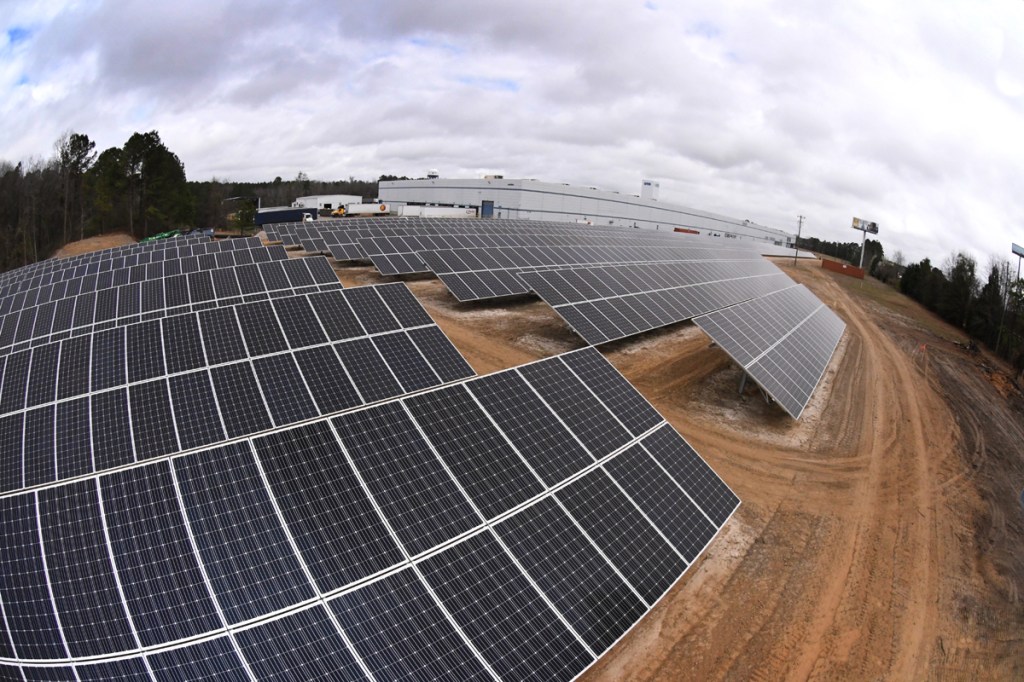Yesterday, the Otis Elevator Co. announced the opening of a new solar field that will power 25 percent of its main 500,000-square-foot facility in Florence, S.C. The solar arrays are anticipated to produce more than 1.8 million kilowatt-hours of power annually. “Otis is committed to bringing sustainable solutions to the communities where we live and work,” said Tom Vining, president of Otis Americas, in a press release. “This investment significantly reduces our ecological footprint, while allowing us to continue to produce high-performing, energy-efficient elevator equipment for our customers.” [Otis]
Researchers at Purdue University find that concrete infused with microscopic-sized nanocrystals from wood make the building material stronger and capable of setting faster. The team aims to put the infused concrete to the test in a to-be-determined bridge that will be built in California. [Purdue University]
Spanish hard surfaces company Neolith recently released a new collection of façade systems called Skyline, which are covered in an aqueous, titanium dioxide nanoparticle–based coating created by Cincinnati, Ohio–based surface treatment manufacturer Pureti. [ARCHITECT]

Courtesy Wood Skin
Fold panels by Wood Skin (available via Robin Reigi)
ARCHITECT’s Blaine Brownell highlights several readily available, experimental, and speculative alternative wood products and processing methods. [ARCHITECT]
The world’s first floating farm by Hywind Scotland—which began function in October of last year off the coast of Peterhead in Aberdeenshire, Scotland—has exceeded energy production expectations in the three months it has been operational. According to the international energy company Statoil, who operates the facility, “the typical capacity factor for an bottom-fixed offshore wind farm is 45 to 60 percent. By comparison, Hywind Scotland achieved an average of approximately 65 percent during November, December, and January.” [Statoil]
Elon Musk’s Boring Co. has received a building permit from the D.C. government to start digging a Hyperloop transportation tunnel in the nation’s capital. The District will be part of an East Coast line that would connect it to Baltimore, Philadelphia, and New York in a trip that would take less than 29 minutes. [The Washington Post]
Call for Entries: ARCHITECT invites design firms, manufacturers, researchers, students, startups, and innovators in all building-related disciplines to enter our 12th annual R+D Awards by April 20. Winners will be featured in our July issue and online. [ARCHITECT]
